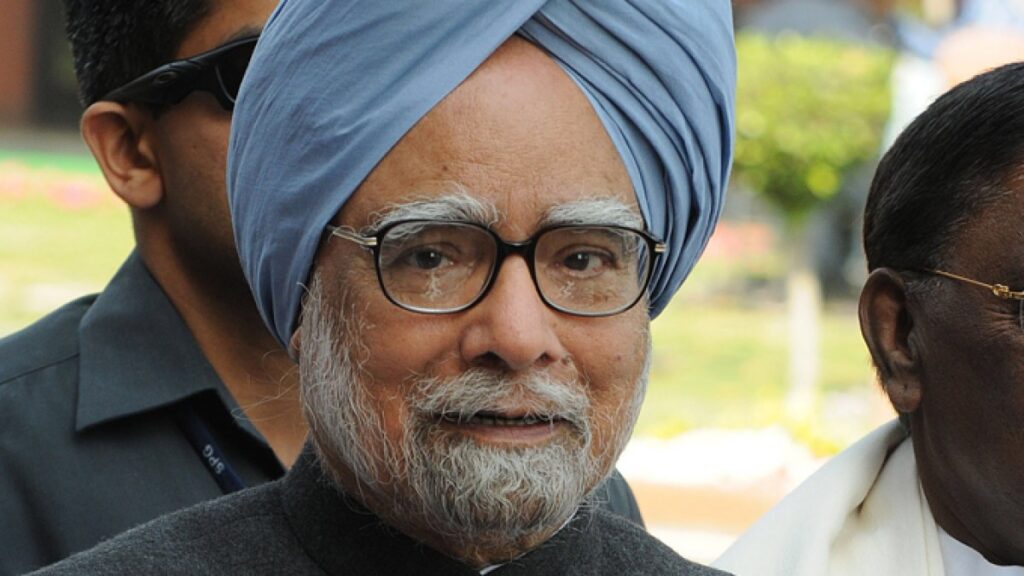BREAKINGBREAKING,
Singh served as prime minister from 2004 to 2014 and was the architect of India’s economic liberalisation in the 1990s.
Former Indian Prime Minister Manmohan Singh, who governed the South Asian country for two terms and liberalised its economy in an earlier stint as finance minister, has died. He was 92.
Singh, an economist-turned-politician who also served as the governor of the central bank, was ailing and admitted to the All India Institute of Medical Sciences in New Delhi late on Thursday.
His health deteriorated due to “sudden loss of consciousness at home,” the hospital said in a statement. He was “being treated for age-related medical conditions,” the statement added.
With profound grief, we inform the demise of the former Prime Minister of India, Dr Manmohan Singh, aged 92. He was being treated for age-related medical conditions and had a sudden loss of consciousness at home on 26 December 2024. Resuscitative measures were started immediately… pic.twitter.com/ZX9NakKo7Y
— ANI (@ANI) December 26, 2024
A mild-mannered technocrat, Singh became one of India’s longest-serving prime ministers for 10 years, serving from 2004-2014, earning a reputation as a man of great personal integrity.
Prime Minister Narendra Modi, who succeeded Singh in 2014, called him one of India’s “most distinguished leaders” who rose from humble origins and left “a strong imprint on our economic policy over the years”.
“As our Prime Minister, he made extensive efforts to improve people’s lives,” Modi said in a post on X. He called Singh’s interventions in Parliament as a lawmaker “insightful” and said “his wisdom and humility were always visible”.
India mourns the loss of one of its most distinguished leaders, Dr. Manmohan Singh Ji. Rising from humble origins, he rose to become a respected economist. He served in various government positions as well, including as Finance Minister, leaving a strong imprint on our economic… pic.twitter.com/clW00Yv6oP
— Narendra Modi (@narendramodi) December 26, 2024
Born into a poor family in a part of British-ruled India now in Pakistan, Singh studied by candlelight to win a place at Cambridge University before heading to Oxford, earning a doctorate with a thesis on the role of exports and free trade in India’s economy.
He became a respected economist, then India’s central bank governor and a government advisor but had no apparent plans for a political career when he was suddenly tapped to become finance minister in 1991.
During that tenure to 1996, Singh was the architect of reforms that saved India’s economy from a severe balance of payments crisis, promoted deregulation and other measures that opened an insular country to the world.
Manmohan Singh Ji led India with immense wisdom and integrity. His humility and deep understanding of economics inspired the nation.
My heartfelt condolences to Mrs. Kaur and the family.
I have lost a mentor and guide. Millions of us who admired him will remember him with the… pic.twitter.com/bYT5o1ZN2R
— Rahul Gandhi (@RahulGandhi) December 26, 2024
Singh’s ascension to prime minister in 2004 was even more unexpected.
He was asked to take on the job by Sonia Gandhi, who led the centre-left Congress party to a surprise victory. Italian by birth, she feared her ancestry would be used by Hindu-nationalist opponents to attack the government if she were to lead the country.
Riding an unprecedented period of economic growth, Singh’s government shared the spoils of the country’s new found wealth, introducing welfare schemes such as a jobs programme for the rural poor.
In 2008, his government also clinched a landmark deal that permitted peaceful trade in nuclear energy with the United States for the first time in three decades, paving the way for strong relations between New Delhi and Washington.
However, his efforts to further open up the Indian economy were frequently frustrated by political wrangling within his own party and demands made by coalition partners.
Singh adopted a low profile after relinquishing the post of prime minister. He is survived by his wife and three daughters.

